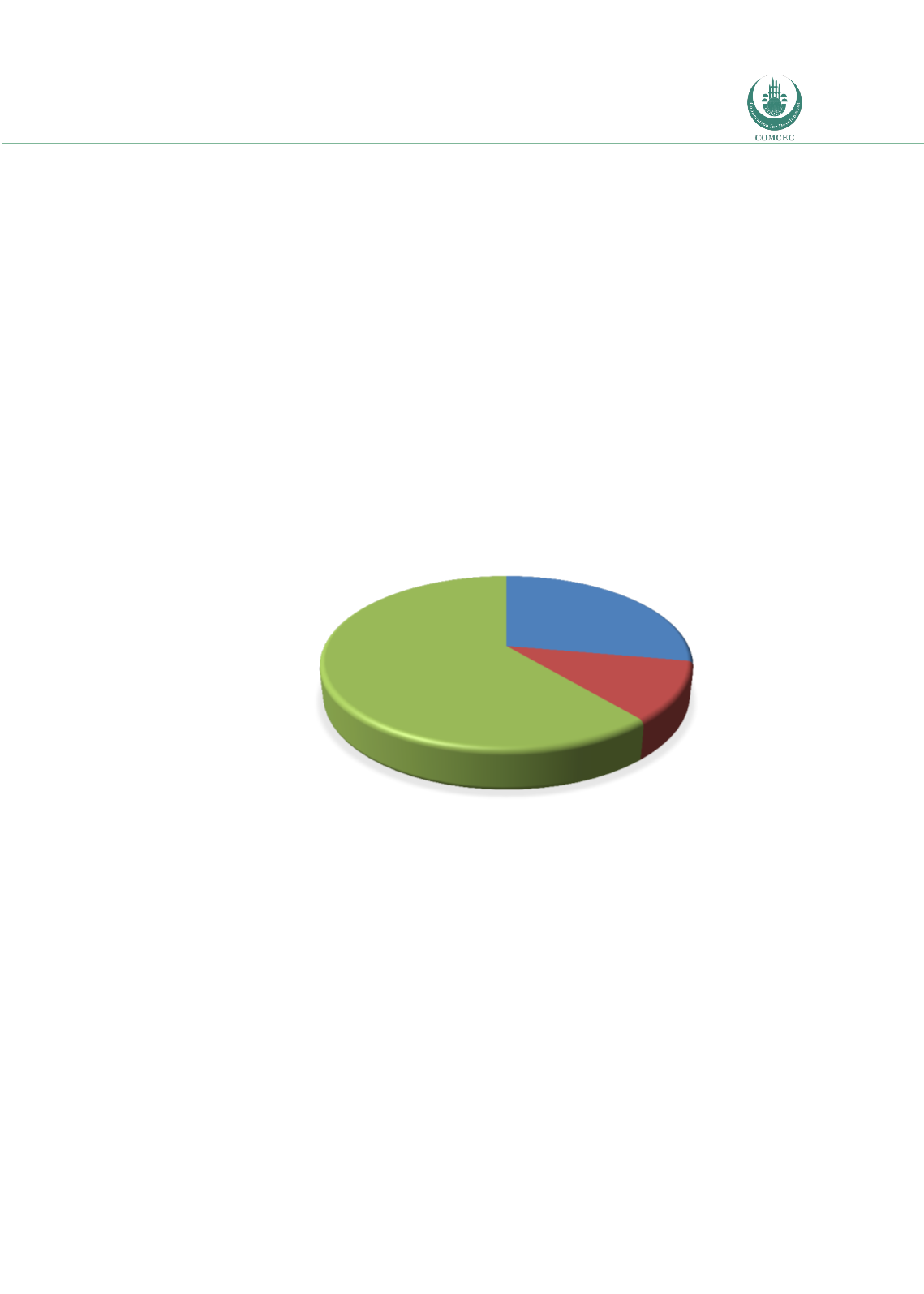

Risk Management in
Islamic Financial Instruments
115
related matters. Similarly, to deal with other financial matters, Malaysia has established the
IFSB. Malaysian Islamic banks also have to follow local standards. As countries slowly move
towards a combined Islamic financial reporting system, the job of bankers is expected to be
more complex in terms of balancing the culture and depth of
Shari’ah
practices in accordance
with their own banking system.
Figure 5.5 illustrates the use of various accounting reporting systems. As countries are slowly
adopting the International Financial Reporting System, one third of the banks have moved to a
market specific accounting reporting system. These localized reporting standards are either
modified versions of AAOIFI or are completely new, being driven by a mixture two or more
systems. For instance, many Malaysian banks follow the Malaysian Accounting Standard Board
(MASB) regulations. The Bank Negara Malaysia, Securities Commission,
Shari’ah
Advisory
Council and the Islamic Financial Services Board (IFSB) also have contributed in the
development of the Islamic Financial Reporting System for IFIs in Malaysia. However, almost a
half of the sample banks are still using AAOIFI accounting reporting standards. Since the
sample in this study is biased towards MENA, the dominance of AAOIFI is expected.
Figure 5.6: Assessment of Profit-and-Loss Situation
Banks periodically monitor their profit and loss scenario, and whether these are affected by
any major events. As monitoring is expensive, it is suggested that IFIs have frequent
computerized monitoring of their profit and loss scenario. End of day processing of the profit
and loss scenario may help bankers better prepare for adverse situations. Figure 5.6 explains
how frequently the IFIs appraise their profit and loss situations. Some highly technology-based
IFIs do it daily through a report called the ‘end of day processing report (EDP)’. However, it is
highly challenging for the remaining IFIs to maintain a daily report. The cost of monitoring is
an important aspect, which is expected to rise with a more frequent monitoring exercise. IFIs
have to devise an optimal plan to balance the cost and benefits of frequent monitoring.
Internationally, conventional banks monitor large loans very frequently, but lengthen the
monitoring of smaller loans to a monthly or quarterly basis.
Daily
28%
Weekly
11%
Monthly
61%

















